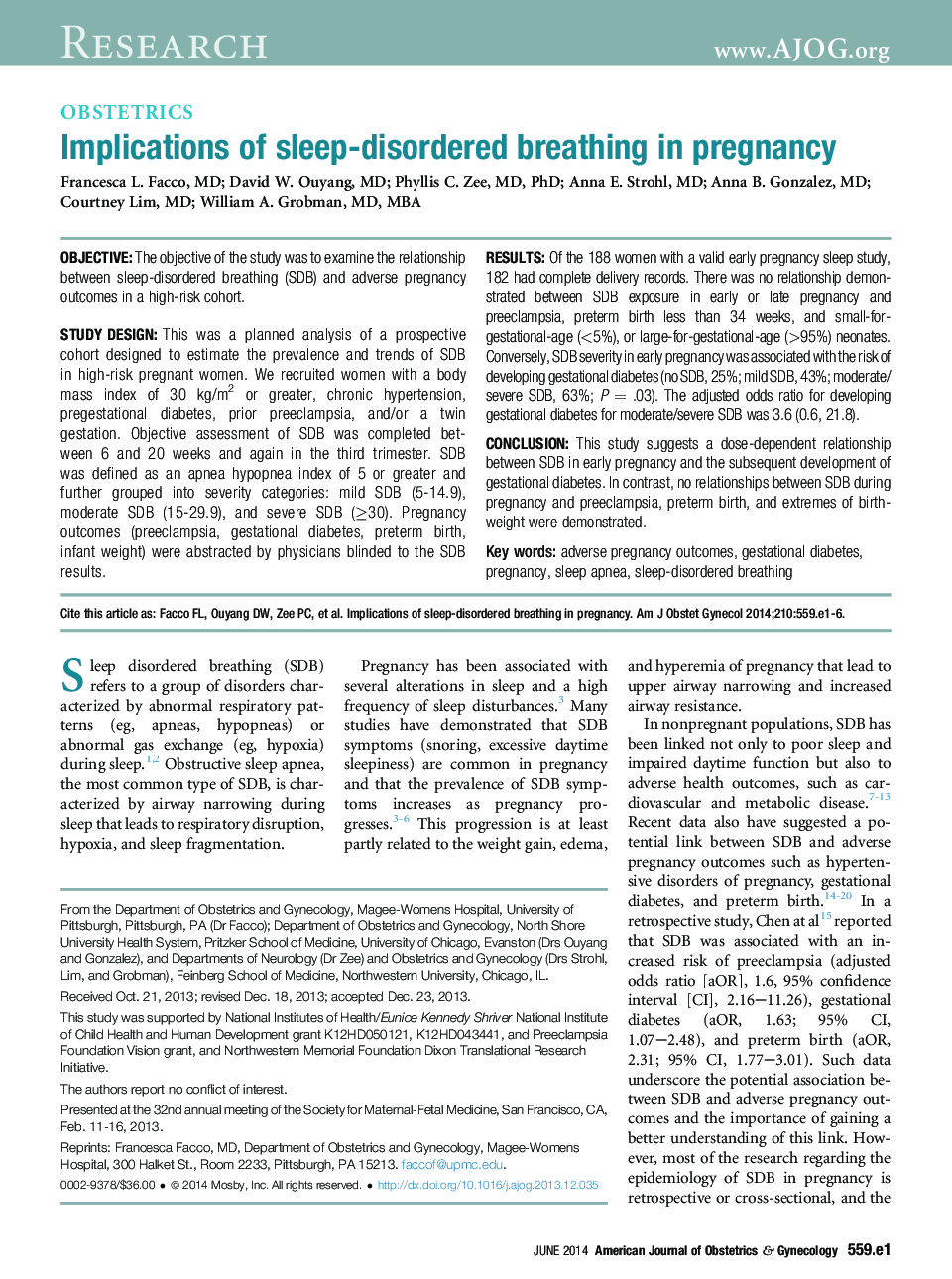| Article ID | Journal | Published Year | Pages | File Type |
|---|---|---|---|---|
| 6145102 | American Journal of Obstetrics and Gynecology | 2014 | 6 Pages |
ObjectiveThe objective of the study was to examine the relationship between sleep-disordered breathing (SDB) and adverse pregnancy outcomes in a high-risk cohort.Study DesignThis was a planned analysis of a prospective cohort designed to estimate the prevalence and trends of SDB in high-risk pregnant women. We recruited women with a body mass index of 30 kg/m2 or greater, chronic hypertension, pregestational diabetes, prior preeclampsia, and/or a twin gestation. Objective assessment of SDB was completed between 6 and 20 weeks and again in the third trimester. SDB was defined as an apnea hypopnea index of 5 or greater and further grouped into severity categories: mild SDB (5-14.9), moderate SDB (15-29.9), and severe SDB (â¥30). Pregnancy outcomes (preeclampsia, gestational diabetes, preterm birth, infant weight) were abstracted by physicians blinded to the SDB results.ResultsOf the 188 women with a valid early pregnancy sleep study, 182 had complete delivery records. There was no relationship demonstrated between SDB exposure in early or late pregnancy and preeclampsia, preterm birth less than 34 weeks, and small-for-gestational-age (<5%), or large-for-gestational-age (>95%) neonates. Conversely, SDB severity in early pregnancy was associated with the risk of developing gestational diabetes (no SDB, 25%; mild SDB, 43%; moderate/severe SDB, 63%; P = .03). The adjusted odds ratio for developing gestational diabetes for moderate/severe SDB was 3.6 (0.6, 21.8).ConclusionThis study suggests a dose-dependent relationship between SDB in early pregnancy and the subsequent development of gestational diabetes. In contrast, no relationships between SDB during pregnancy and preeclampsia, preterm birth, and extremes of birthweight were demonstrated.
